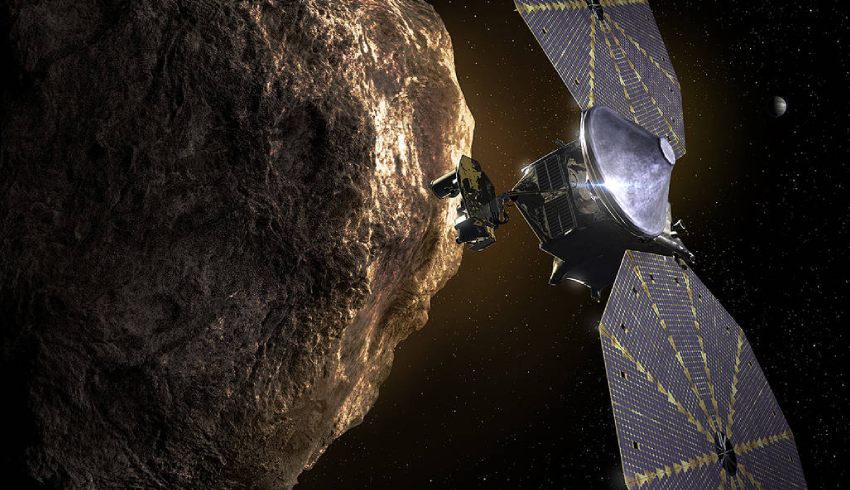In a blog update, the American agency said the spacecraft has successfully performed multiple planned maneuvers – directing its path – but they have not aided the solar array to adjust into place.
NASA’s Lucy spacecraft successfully blasted off on 16 October on a United Launch Alliance Atlas V rocket from Space Launch Complex 41 at Cape Canaveral Space Force Station in Florida.
It marks the first time a spacecraft has launched towards the Trojan asteroids in the agency’s history.
NASA said Lucy remains in cruise mode, which is the standard flight mode allowing for greater spacecraft autonomy.
“Most recently, the spacecraft’s position was adjusted on October 26 to allow the team to measure how much electric current is moving through the partially deployed solar array and thus understand how close that array is to the fully latched position,” NASA said.
Analysis indicates the solar array is between 75 to 95 per cent deployed and is currently being held in place by a lanyard, designed to help unfurl the arrays upon launch.
Lucy will rely on the two solar arrays to complete many of the spacecraft’s planned tasks.
The agency said an “anomaly response” team will continue to work on establishing the cause of why the solar array is unable to deploy.
“NASA and SwRI [Southwest Research Institute] are evaluating a range of options, including the possibility of leaving the array in its current state,” the blog said.
Any attempt to redeploy the solar array will occur no earlier than 16 November, NASA said.
Lucy will allow scientists to define how the “solar system’s planets formed 4.5 billion years ago” and how they landed in their current configuration, the agency says.
The US$981 million mission will see Lucy orbit for 12 years exploring the Trojans, which orbit around the sun in front and behind the gas giant Jupiter.
An hour after launch, Lucy separated from the second stage of the ULA Atlas V 401 Rocket, and 30 minutes later its two solar arrays – each 7.3 metres wide – unfurled and began charging the spacecraft’s batteries, powering its subsystems.
In a blog post a day later on 17 October, NASA first reported Lucy was stable, but one of its solar arrays was not attached.
“Lucy embodies NASA’s enduring quest to push out into the cosmos for the sake of exploration and science, to better understand the universe and our place within it,” said NASA administrator Bill Nelson.
“I can’t wait to see what mysteries the mission uncovers!” he added.
NASA said because Jupiter is so large, it scatters away all asteroids in its vicinity, and due to “gravitational influences” from the planet and sun, they have been trapped in stable orbits for many years.
Lucy will travel to eight different asteroids, one "main belt" asteroid – located between Mars and Jupiter – and seven Trojans.
The spacecraft will map surface geology, colour, composition, interiors, bulk properties and will search for rings and satellites on the Trojan asteroids.
“We started working on the Lucy mission concept early in 2014, so this launch has been long in the making,” said Hal Levison, Lucy principal investigator.
“It will still be several years before we get to the first Trojan asteroid, but these objects are worth the wait and all the effort because of their immense scientific value,” Levison added.
After its gravity assist in 2022, Lucy will be directed to orbit beyond Mars, then come towards Earth for another gravity assist in 2024.
The second gravity assist will propel Lucy to the Donaldjohanson asteroid – located within the main belt – in 2025.
Lucy will have several missions to complete over the next decade, expecting to meet with swarms of Trojans for a 2033 encounter.

Isabella Richards
Bella Richards is a journalist who has written for several local newspapers, her university newspaper and a tech magazine, and completed her Bachelor of Communications (Journalism) at the University of Technology Sydney in 2020. She joined Momentum Media in 2021, and has since written breaking news stories across Space Connect, Australian Aviation and World of Aviation.
You can email Bella on: [email protected]

